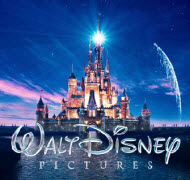Fantasia/2000
Reviewed by: Matthew Prins
CONTRIBUTOR
| Moral Rating: | Better than Average |
| Moviemaking Quality: |
|
| Primary Audience: | Children |
| Genre: | Animation |
| Length: | 1 hr. 15 min. |
| Year of Release: | 2000 |
| USA Release: |


| Featuring |
|---|
| James Earl Jones, Quincy Jones, Angela Lansbury, Steve Martin, Penn and Teller |
| Director |
|
Hendel Butoy, Francis Glebas, Paul Brizzi |
| Producer |
| Don Ernst |
| Distributor |
Aside from their collaborations with Pixar, Disney has been in an artistic chasm lately. When the “The Lion King” was released, it seemed like Disney had been putting out high-quality animated features year after year since the beginning of time; it was easy to forget that the reinvention of Disney didn’t start until 1989’s “The Little Mermaid” and 1991’s “Beauty and the Beast”. Then came the somewhat disappointing “Hunchback of Notre Dame,” and the dreadful “Pocahontas”, and the barely-better “Hercules” and “Tarzan,” and we were reminded that there was a time not so long ago when Disney animation was usually bland and ignorable.
“Fantasia/2000” is Disney’s attempt to get back some of the critical acclaim that has been missing from its recent fare while—and this is very important to Disney executives—making a good bit of money. The first “Fantasia” was a box-office flop, only getting into the black during its re-release 25 years after it first came out; the mildly obscure classical pieces and snippets of abstract animation didn’t appeal to a mass audience until psychedelic images became more mainstream in the ’60s.
I mention the economics of “Fantasia” and “Fantasia/2000” because I suspect worries about finances caused the pedestrianness that protrudes Fantasia/2000. There are seven new animation segments in “Fantasia/2000,” and only one—featuring four interlocking stories in a line-drawn New York set to Gershwin’s “Rhapsody in Blue”—tries a visual style different from Disney’s current palette. There are high points in the other six shorts, but it would be a stretch to call any of them unique, inventive, or particularly emotionally compelling. It doesn’t help that the classical pieces in the film are the most among the ubiquitous selections possible: Beethoven’s 5th, the aforementioned “Rhapsody in Blue,” and even the graduation staple “Pomp and Circumstance.” Familiarity sells. Disney knows it and has made “Fantasia/2000” more palatable to the general public because of it. (The film shows a snippet of a Salvador Dali segment that was considered; that bit was more interesting to me than most of the other segments in their entirety.)
Despite their lack of originality, most of the shorts in “Fantasia/2000” work on the excitement of their commotion, if nothing else. The opening sequence of thousands of fluttering triangles is the best example of that excitement, even if the sequence adds up to nothing. “Pines of Rome” features a heroic story of flying whales; its pictures of those mammals floating over the water benefits the most from the IMAX treatment. The New York short is easily the masterwork; it’s the only new segment that is emotionally involving, perhaps because it is the only segment to feature humans as major characters. A short involving a tin soldier and a ballerina is notable only because it shows how sloppy cartoons can look when computer and hand-drawn animation don’t quite mesh. The shortest segment involves a yo-yoing flamingo; it’s happy and light, and it doesn’t overstay its concept.
Disney was originally going to have three segments from the original “Fantasia” in “Fantasia/2000;” time constraints cut that down to only “The Sorcerer’s Apprentice,” which translates better to the IMAX screen than some critics had hinted. The nadir of “Fantasia/2000” is an ill-advised rip-off of “Titanic” (with a happier Disneyesque ending, of course), starring Donald Duck as Leonardo DiCaprio, Daisy Duck as Kate Winslet, and Noah’s Ark as The Boat. “Fantasia/2000” ends with an ecological rejuvenation similar in theme to the anime film “Princess Mononoke”; it counteracts its convoluted story with the most fantastic visuals of the film. Separating the sequences are contrived appearances by movie stars (James Earl Jones, Angela Lansbury, Steve Martin, Bette Midler) that usually are unneeded and unsuccessful comic relief; James Earl Jones, in particular, shows why he should turn down all future comedic roles.)
More than most G-rated Disney films, “Fantasia/2000” has moments that might bother parents with young children. The most obvious of these moments occurs between sequences when Teller (of comic troupe fame Penn and Teller) chops off his hand with a butcher knife. It’s quickly shown to be a prosthetic, but it still seems very out of place in a G-rated film. There are dark moments, but not much darker than the dark moments in recent animated fare. Some Christians may be upset at the flippancy and inaccuracy in the Donald Duck and the Ark sequence; given Disney’s perceived track record, others might be happy to see a Biblical story in “Fantasia/2000” at all.
If it’s possible, see “Fantasia/2000” in an IMAX theater rather than waiting for the 35mm release in May. Despite all the film’s weaknesses, it’s invigorating seeing a film in the IMAX format that doesn’t mistake flying through the air for content.



